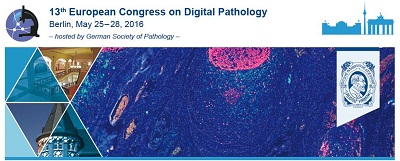Raman Spectroscopy-Based Cancer Diagnostic Platform For Pathology Classification In Barrett’s Oesophagus And Its Integration Into Clinic
Abstract
Introduction/ Background
Raman spectroscopy (RS) has been shown to accurately classify tissue pathology in a variety of conditions and organ systems. Much of this work has been performed using Raman microspectrometers on tissue sections.
Despite the demonstrated potential as an accurate cancer diagnostic tool, RS is yet to be adopted by the clinic for histopathology review. The Stratified Medicine through Advanced Raman Technologies (SMART) consortium has begun to address some of the hurdles (e.g. tissue sample preparation, data collection, pre-processing and transferability) in its adoption for cancer diagnosis. SMART is a multicentre industry-clinical-academic collaboration with the aim of developing a pathology platform for advanced diagnosis, using developments in hardware and software. Renishaw’s Streamline™ Raman imaging technology enables the collection of Raman spectra much faster without compromising signal to noise
Aims
This study aims to assess the ability of this technique to accurately classify tissue pathology, using an oesophageal tissue model. This demonstrates the project’s mission to deliver a robust Raman based diagnostic platform to enable clinical researchers to stage cancer, define tumour margin, build cancer diagnostic models and discover novel disease bio markers.
Methods
Tissue was collected from the oesophagus in patients undergoing endoscopy or resection. Specimens were collected from patients with Barrett’s oesophagus (BO), dysplasia and adenocarcinoma, and snap frozen in liquid nitrogen. 8μm tissue sections were placed onto calcium fluoride slides for spectroscopic measurement and with contiguous sections stained with haematoxylin and eosin (H&E) for histological comparison. Raman spectra were collected across homogeneous regions of tissue pathology, using Streamline™ acquisitions of 60 seconds/line, at 1.1μm spatial resolution. Classification models were constructed to discriminate pathology subtypes.
Results
Advanced multivariate statistical analysis tools were used to develop pathology classification models, which were then tested using leave-one-out cross-validation. Each sample was then classified using a ‘voting classification’ for all pixels from one sample. The sensitivity and specificity of this pathology classification model using RS to discriminate dysplasia/adenocarcinoma from BO produced sensitivity and specificities >80%.
By combining multivariate statistical analysis with Streamlineâ„¢ Raman acquisition of spectral data, we have demonstrated good sensitivities and specificities. This study illustrates the potential of non-invasive rapid Raman spectral mapping measurements and development of a robust and validated oesophageal classification model that are able to classify tissue pathology, providing a diagnostic tool for researchers and clinicians with potential application to other pathology and tissue types.
Downloads

This work is licensed under a Creative Commons Attribution-ShareAlike 4.0 International License.
Authors who publish with this journal agree to the following terms:
1. Authors retain copyright and grant the journal right of first publication with the work simultaneously licensed under a Creative Commons Attribution License that allows others to share the work with an acknowledgement of the work's authorship and initial publication in this journal.
2. Authors are able to enter into separate, additional contractual arrangements for the non-exclusive distribution of the journal's published version of the work (e.g., post it to an institutional repository or publish it in a book), with an acknowledgement of its initial publication in this journal.
3. Authors are permitted and encouraged to post their work online (e.g., in institutional repositories or on their website) prior to and during the submission process, as it can lead to productive exchanges, as well as earlier and greater citation of published work (See The Effect of Open Access).
4. In case of virtual slide publication the authors agree to copy the article in a structural modified version to the journal's VS archive.








